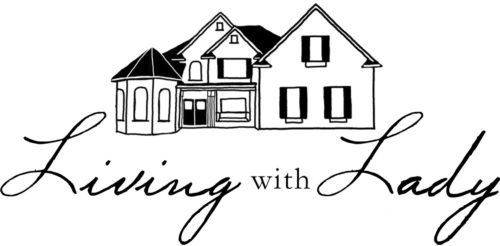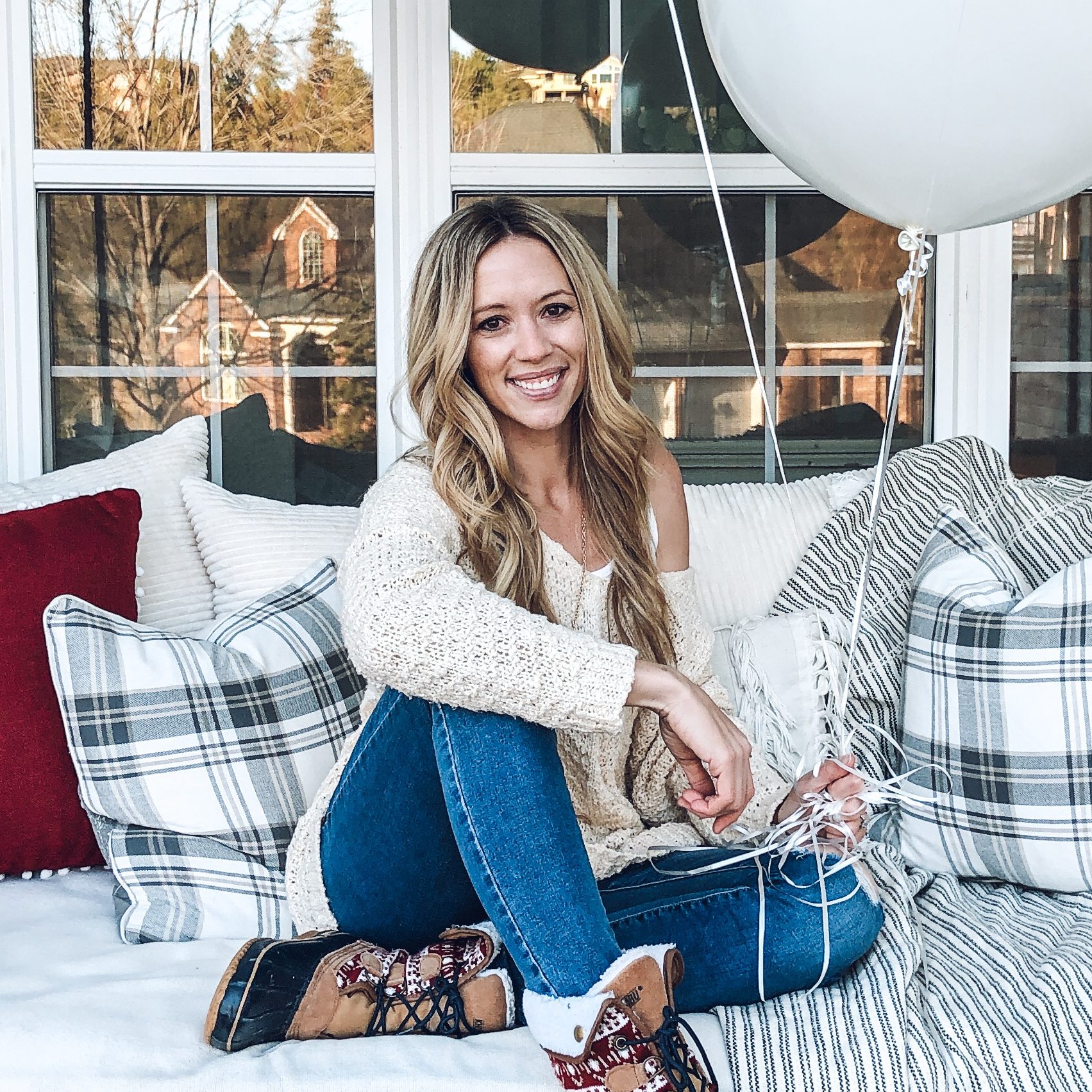
When we moved into our home, we brought with us a small square table from our very first home to put in the breakfast nook of our kitchen. This worked well for our family of four until we added another to the family, and as soon as he was ready to sit in a normal chair (not the high chair anymore) we quickly realized this table just didn’t suit our needs anymore and that someone (usually one of the parents) was usually pulling up a stool and sitting on a corner, which just isn’t pleasant.
When I saw a free table go up on Facebook, I decided to jump on it in hopes we could restore it a little and use it in our breakfast nook. My husband went to pick it up, and when he brought it home I realized it was in pretty rough shape.

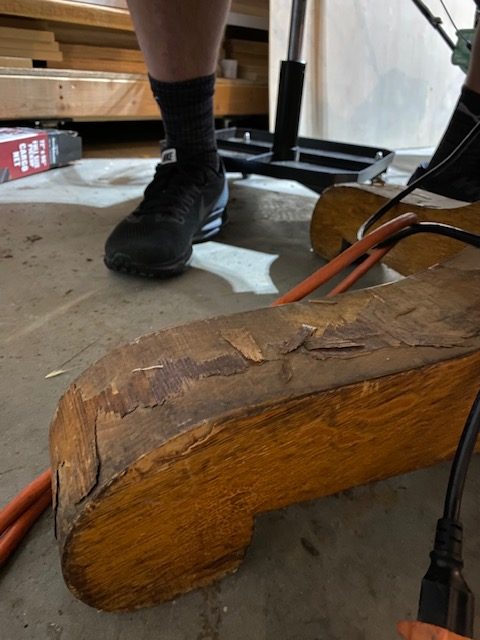

I originally thought I would sand the top smooth and then stain it and paint the lower portion, but with the table so beat up, we realized we needed to take the whole top layer of veneer off in order to get it flat and smooth.
Once we started peeling off the layers of veneer, we realized what a gorgeous table there was underneath. Getting the veneer off wasn’t easy, though. It took a heat gun, putty knives in varying sizes, and a bit of gusto to get it off. I kept the heat gun applied to the areas being worked on while my husband pushed the putty knife underneath to lift it up.
Tip: Wear gloves! The veneer will scratch your hands if you don’t!
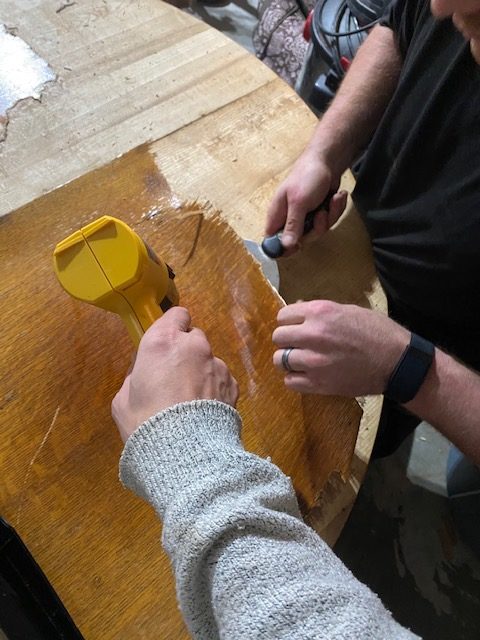
Now this is where I had a major fail. I didn’t take any photos during these next steps! But, I did take videos that I shared on my Instagram page that I saved under my highlights named “Table Refinish.”
Once the top was off, I realized just how pretty the wood was and decided that ultimately I would love it so much more if it could all be stained the same color instead of the lower half being painted as I originally intended. Because the legs were in SUCH bad shape, we had to use a band saw to slice the veneer off on the flat edges, and a heavy-duty sander to get the curbed edges. But, it worked and it’s as if they were never covered in veneer.
It was at this point we realized if we took the veneer off the round part of the base, there was a good chance the pieces would fall apart. So, we decided to sand it down as much as we could to get a lighter color, and then hope we could match it to the rest of the table.
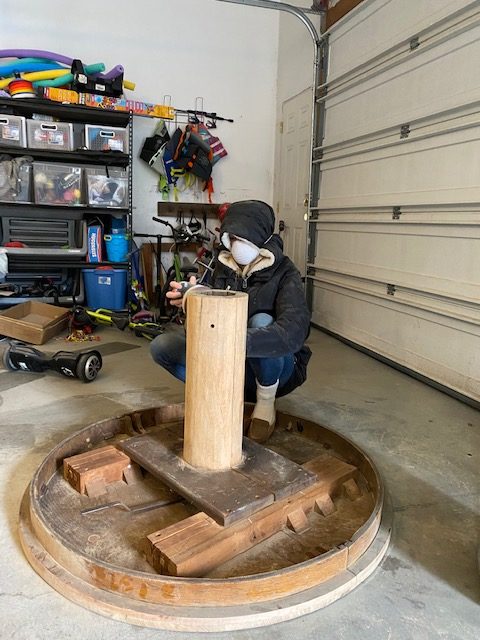
Once everything was sanded, it was time to test stain colors. We couldn’t really test these on a scrap piece of wood since we realized upon closer inspection that this table was made from varying types of wood (possibly some particle board?) and that we needed to see how the stain reacted to each layer.
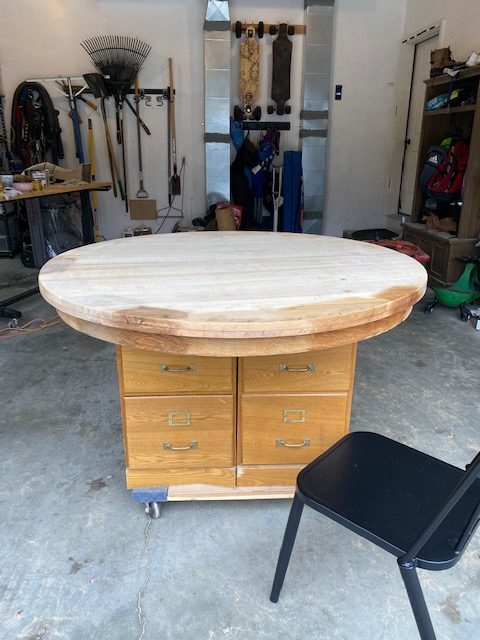
I had a very specific look in mind and every stain combination I tried was not getting me the look I was going for. Plus, one of the layers of wood was showing up VERY red in person, which became quite frustrating.
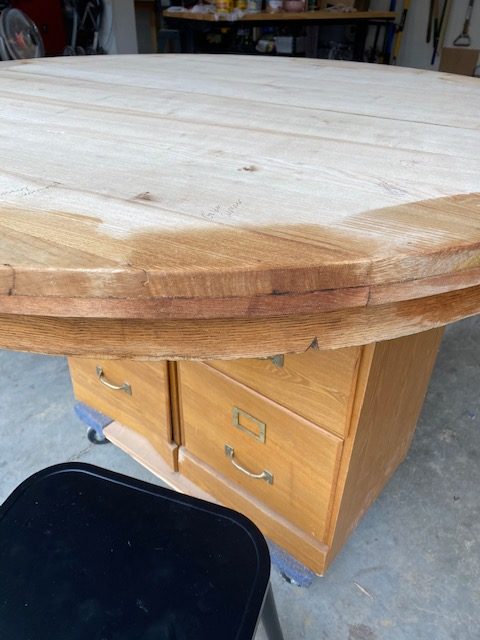
It was like a science lab in there!
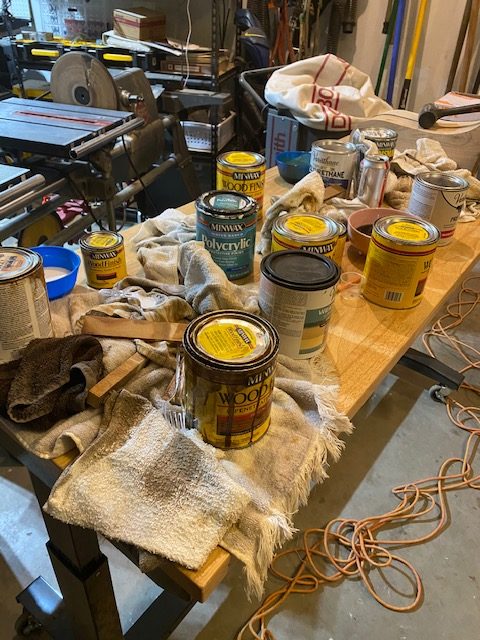
I even tried a pickling effect, which did make the woods blend well together, but ultimately wasn’t the look we were going for.
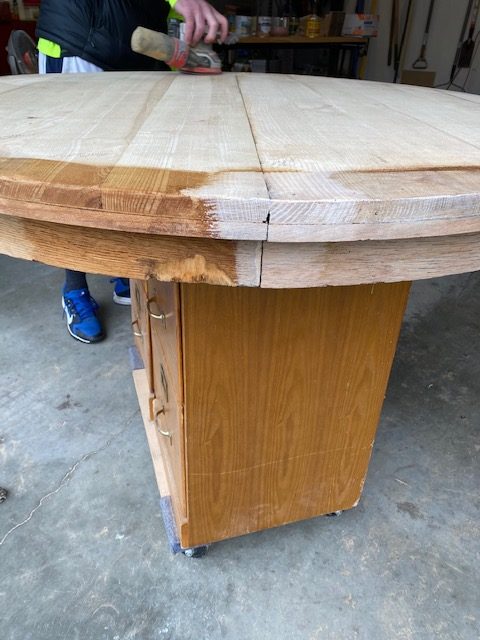
Alas, I realized if I used a wood conditioner first, it would even out all of the wood tones making the stain apply evenly and it gave me the look I was going for! The picture below is of the last two colors I was deciding between, which were Rustoleum’s Summer Oak (Left) and Minwax’s Weathered Oak (right). After much debate, I chose the Weathered Oak.
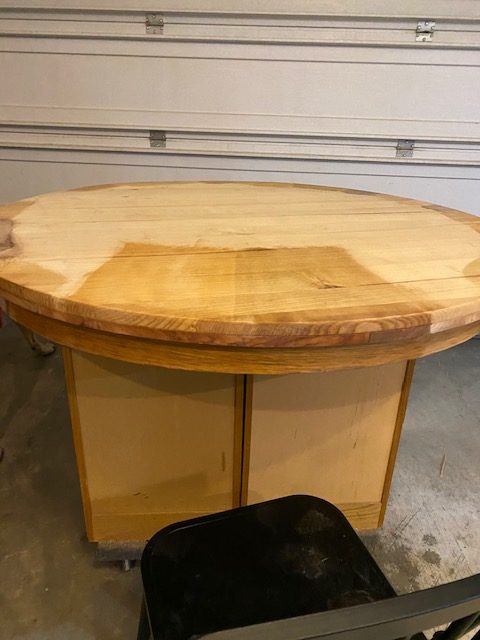
Once decided, we sanded the table back down and I applied THIS wood conditioner on the whole table and let it dry overnight. Be cautious, some wood conditioners have a warning label on them that you must stain your piece within a two-hour window once applying the wood conditioner. This brand does not have this warning and the stain went on beautifully the next morning.
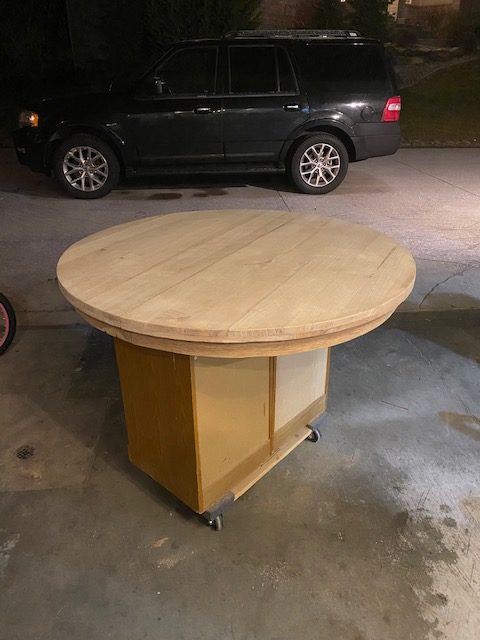
I started with the legs when applying the stain and this is when I started to get really excited!
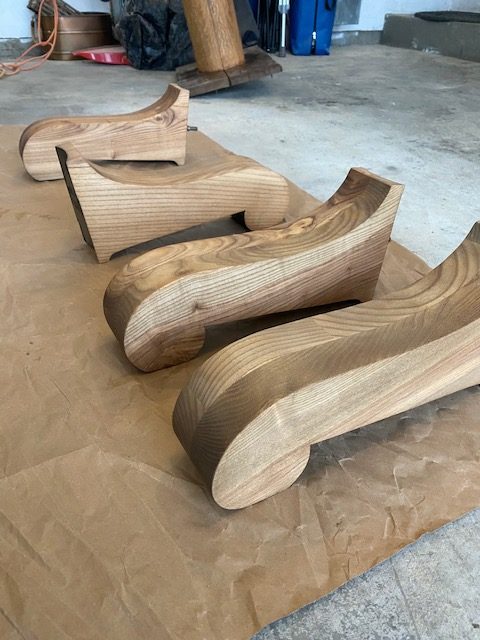
Once everything was stained and completely dry, we applied the Polyurethane. My husband did some research and decided on THIS triple think polyurethane since it only needs one coat, as opposed to three coats with other brands. It goes on THICK and I was worried we were applying it too think, but it dried beautifully.
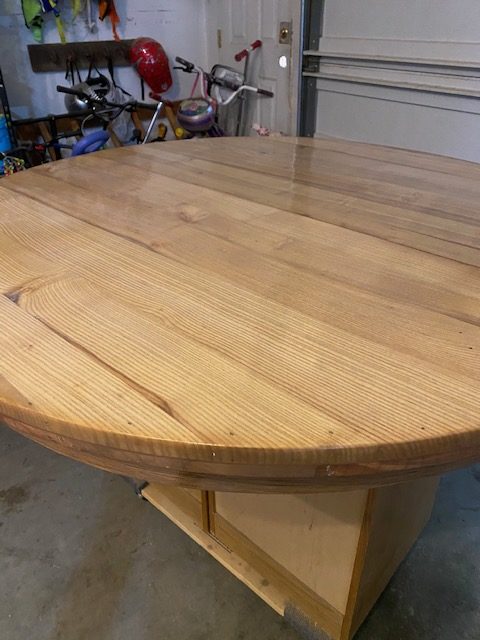
It has a milky finish when wet, fyi.
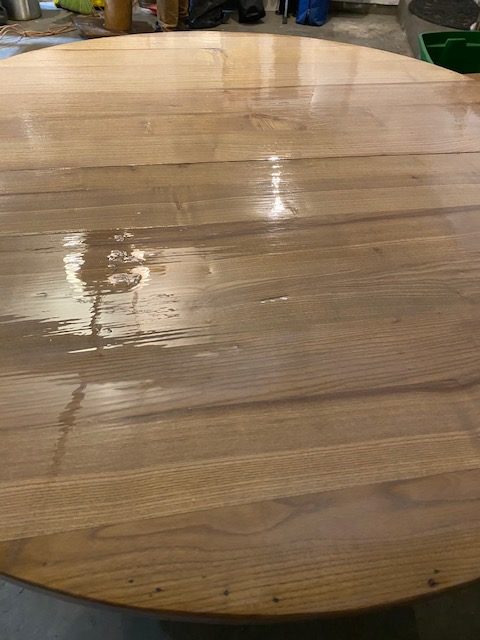
But once dry, it was absolutely beautiful and we are beyond ecstatic with the results. What was once a table that may have been thrown away now has a new life and is one that will be enjoyed in our family for years to come.

I hope this little tutorial helped, and for WAY more views of the process, please check out my highlights on my Instagram page! I showed a video step-by-step which I think helps, too!
Thanks for stopping by!
<3 Shannon
*This post contains affiliate links
